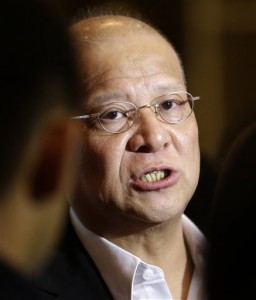Petron has exit plan from Pandacan depot; Chevron insists on staying
MANILA, Philippines—Two of the oil giants operating within the Pandacan oil depot in Manila have expressed contradicting views over the proposed ordinance that would require them to relocate their fuel storage operations to other locations by January 2016.
In a text message, Petron Corp. chairman Ramon S. Ang said the process of transferring their depot operations has started, as they committed in 2010 to move out of Pandacan on or before 2016. Chevron Philippines, in a separate statement, stressed the necessity to keep the terminal facilities within the Pandacan oil depot.
Pilipinas Shell Petroleum Corp. was unavailable for comment.
The proposed ordinance that would require oil depots in Pandacan to relocate was passed by the Manila City Council on third and final reading on Tuesday, without the councilors encountering any resistance.
The 29 councilors of Manila unanimously approved Draft Ordinance No. 7461, which would reclassify the oil depot area from an industrial to a commercial zone, which meant that the Big Three operating within the Pandacan oil depot must leave.
According to Ang, Petron “will do its best” to comply with this ordinance, which anyway, has been in line with the commitment it earlier gave to Manila Mayor Alfredo Lim and Cardinal Gaudencio Rosales.
Based on the filing of parent firm San Miguel Corp. before the Supreme Court, Petron has committed to cease its Pandacan operations within five years or not later than 2016. San Miguel, which owns 68 percent of Petron, filed the manifestation in November 2010.
The oil company is expected to spend as much as $500 million (roughly P21.5 billion) to complete its relocation to five different sites in Luzon, which will include Batangas and Cavite. Petron has been said to be looking at several more areas in Metro Manila for possible depot locations, including the Manila North Harbor.
Meanwhile, Chevron Philippines reiterated that the fuel needs of the country have been best served and would be best served by having its oil terminal facilities remain in Pandacan.
“While Chevron has yet to receive a copy of the amendment to Ordinance 8187, it maintains that the continued stay of its oil terminal facilities in Pandacan is optimal as far as bringing its products closer to the market,” it said.
Chevron Philippines cited its long and proven track record of operating the Pandacan terminal in a safe, secure and reliable manner.
“Our terminal has been operating in the country for more than 80 years with no major incident. Our ongoing operations will continue to meet international safety standards and comply with all legal conditions imposed by the authorities. Safety, security and cost efficiency, as well as due regard for the health of concerned stakeholders and the environment, are of paramount importance to all of us,” added Raissa Bautista, manager for policy government and public affairs of Chevron.
Chevron stressed that any ordinance seeking to relocate the oil terminal facilities from Pandacan “fails to appreciate the relevance and benefit of the facility not just to the city of Manila and its residents, but to the oil supply situation of the country as a whole.”
Petron, Pilipinas Shell and Chevron have been under pressure to move their depot operations out of Pandacan due to safety concerns raised by various cause-oriented groups and the Church, since the area has become surrounded by largely populated communities through the years.
Pandacan is currently considered as the largest and most important depot in the country. On a nationwide basis, the Pandacan depot supplies 70 percent of the shipping industry’s needs; 90 percent of lubricant requirements; 75 percent of all aviation fuel needs; and 25 percent of the demand for chemicals.

